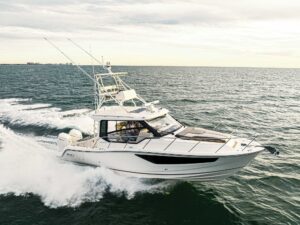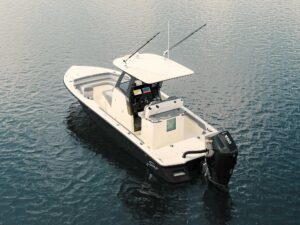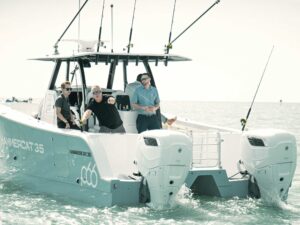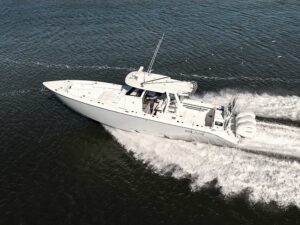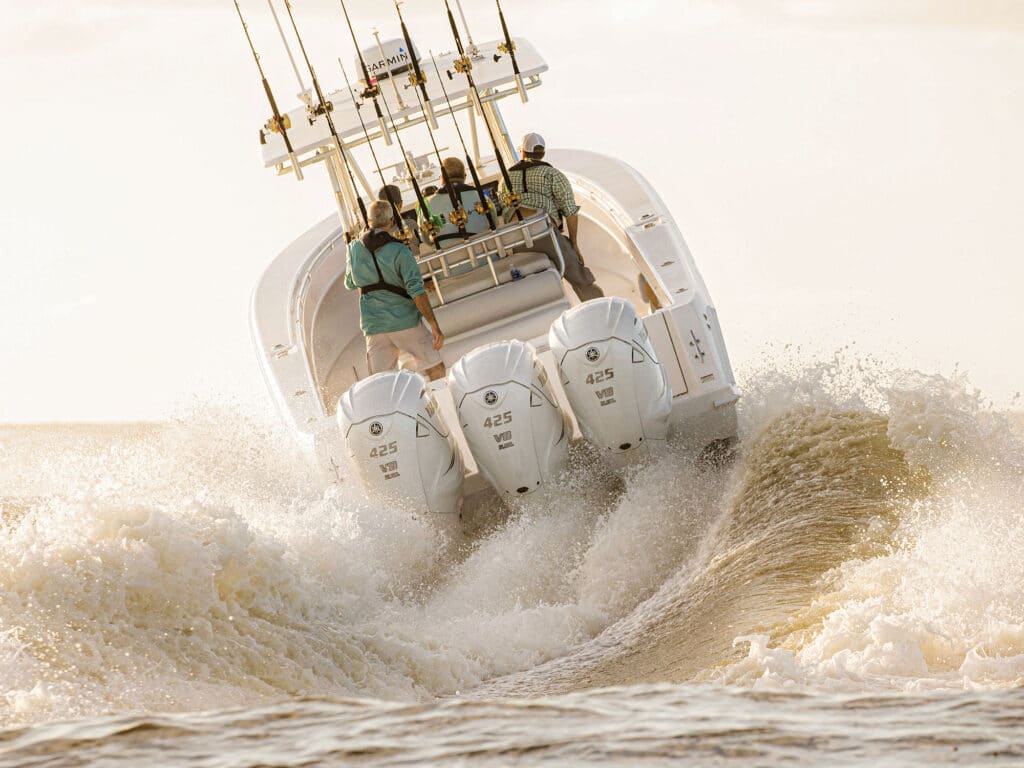
Selecting the right propeller is part guesswork and part science. To home in the science side, we asked three of the top experts in the marine industry for their best tips on choosing the right prop for your boat-and-motor combination.
Our panel included Gary T. Diehl (GD), Mercury Marine’s senior category manager for props and gauges; David Meeler (DM), Yamaha Marine’s product introduction and information manager; and David Greenwood (DG), Suzuki Marine’s general manager for the Marine Technical Center USA. Here is what they had to say.
Dialing in Pitch and Diameter
DM: Each inch of the pitch will affect engine speed by 150 to 200 rpm. As the pitch goes up, rpm goes down. When the diameter goes down, rpm rises. Each one-quarter inch in diameter has the same effect. A boat should be propped to where it’s properly trimmed out and the wide-open throttle (WOT) rpm is in the top 30 percent of the manufacturer’s acceptable WOT rpm range with the average load in the boat.
Prop selection is more than pitch and diameter. Blade shape, geometry and rake also affect performance. Many times, a better solution is available based on these factors than just changing the pitch, diameter or the number of blades. Talking with a propeller professional can help.
DG: When trying to improve the hole shot on heavier hulls, I like to reduce or increase the diameter first and then do the opposite with the pitch.
GD: Most manufacturers have prop models for specific applications, and this is a good place to start the dialing-in process. Usually with these, the diameter is the same, so you only have to select the correct pitch to match your needs.
When to Choose an Aluminum Prop
DM: Aluminum makes a great lightweight spare to have on board, which is highly recommended. Also, when navigating unfamiliar, shallow or debris-strewn waters, an aluminum propeller will absorb an impact by bending or breaking.
GD: Boats with smaller outboards tend to run in shallower waters and are more prone to hitting bottom or structure, so it can make sense to use an aluminum prop to keep from breaking other gear-case components.
When to Go With Four-Blade Props
DM: Four blades are specialty props and should be used when your boat needs extra load-carrying capacity, maximum hole shot, and better control in rough water.
DG: One caution about four-blade props is they tend to create stern lift that can drive the bow down and make the boat run too level.
The Right Prop for Varying Loads
DM: This is the ideal situation for owning two propellers, one to address each scenario. However, if only one prop is used for two widely disparate applications like this, I would prop for the heavy application. Lugging a marine engine is more damaging over time than running it light.
DG: I would prop the boat to have good or acceptable performance with a lot of people. When the hole shot is poor, everyone remembers it. Compromise by not using full-throttle movement and staying out of the rev limiter.
GD: Prop the pitch selection at the very top end of the recommended engine rpm when you are in a light-load condition and hope that the engine is still within the recommended rpm range when operating heavy. If the WOT engine rpm ends up below the recommended rpm in a heavy payload condition, lower the pitch to prevent engine lugging.
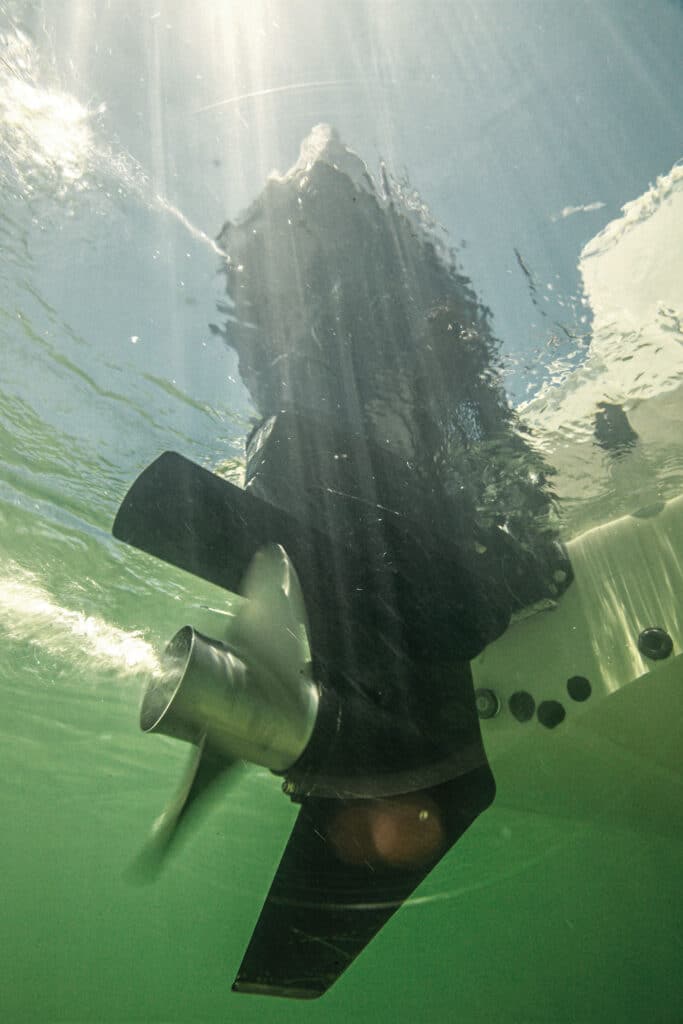
The Biggest Mistakes in Selecting Props
DM: Many boaters say, “I never run wide-open, so what does it matter?” It matters because, otherwise, you don’t know if the boat is wasting rpm and not giving total available speed (not enough prop) or if it is pushing too hard and the engine is lugging (too much prop).
DG: The most common mistake occurs when the boat gets propped correctly initially, then owners add extras onto the boat over time, and now the rpm and hole shot are greatly affected when the boat has a lot of passengers.
GD: Avoid relying on the advice of peers or online pundits who might not know much about prop selection. Always go to a professional to help decide what prop to use, and work with dealers or prop shops that will let you switch props if needed.
Read Next: Pick The Right Propeller for Your Boat
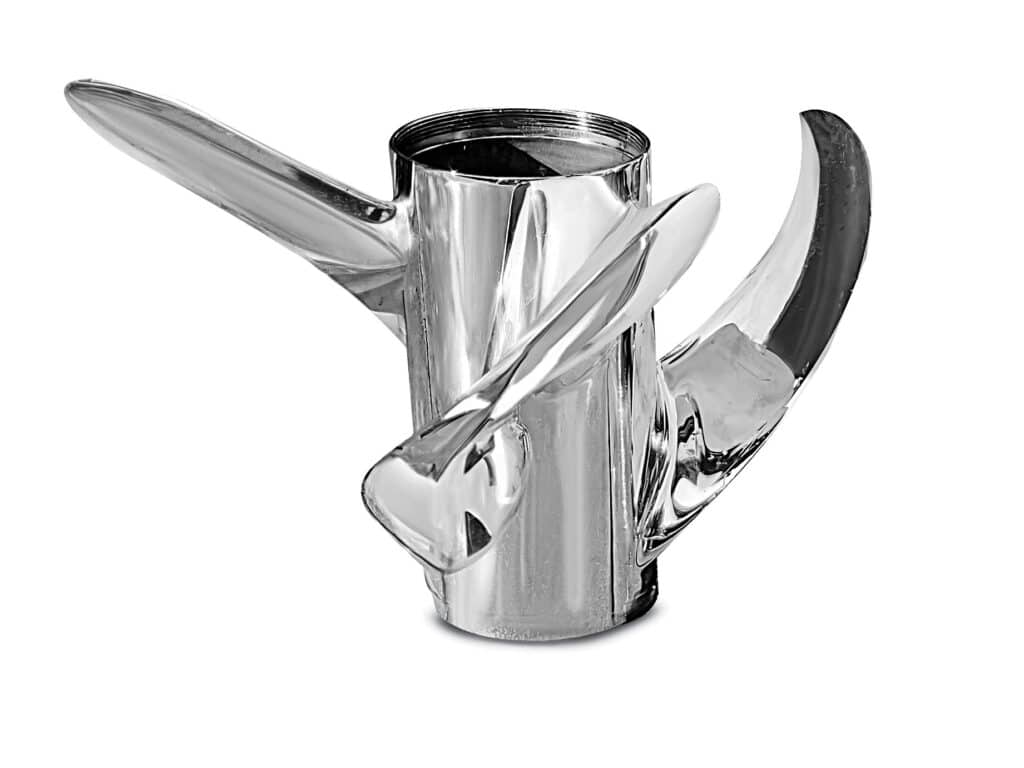
The Sharrow Prop Choice
Sharrow Marine offers boaters a revolutionary new propeller design that is quieter, gives greater control at all speeds, has better acceleration and reduced vibration, and is more
fuel-efficient. Instead of traditional blades, Sharrow props use a looped blade (known as
toroidal) that eliminates the vortex maelstrom conventional prop-blade tips create.
So, how do you choose one? You don’t. Because of its unique design, prospective buyers answer a detailed questionnaire about the boat model, engine, typical usage, performance goals and existing pain points. Then Sharrow asks you to conduct a detailed performance test with your existing prop configuration. Next, Sharrow engineers calculate the best design to meet your specific needs. If for some reason their choice doesn’t meet your expectations, the company offers a 30-day refund or exchange window.
So, is a Sharrow prop worth the premium retail cost of between $5,000 and $6,000? If you put a lot of hours on your boat, the fuel savings (most pronounced at slower cruising speeds) alone can justify the additional cost. The additional control and lower noise level are harder to price; however, based on tests I have conducted, the difference is significant.

